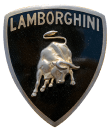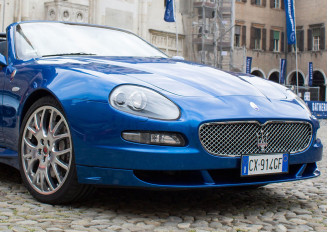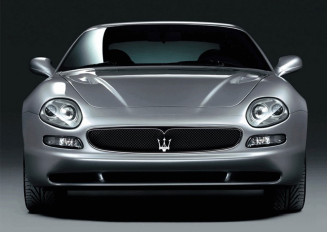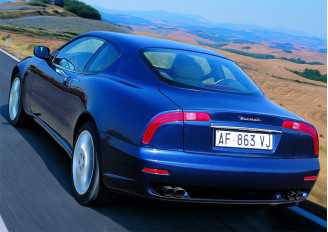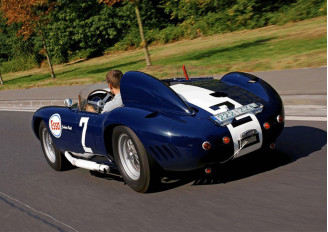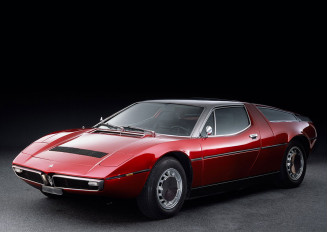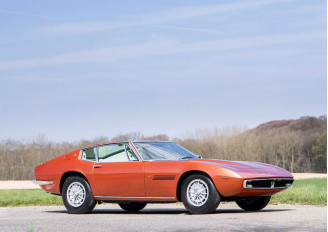Rarest Spare Parts for Maserati 450S, 3200 GT, Ghibli, 4200 GT, Mistral, Indy, Bora, 3500 GT/GTI
Content
- 1 Maserati 450S (1956–1958)
- 2 Maserati 3200 GT (1998–2002)
- 3 Maserati Ghibli I (1967–1973)
- 4 Maserati 4200 GT (2002–2007)
- 5 Maserati Mistral (1963–1970)
- 6 Maserati Indy (1969–1975)
- 7 Maserati Bora (1971–1978)
- 8 Maserati 3500 GT / GTI (1957–1964)
- 9 Maserati: Finding Parts at MIE Corporation
- 10 Final Thoughts
Maserati has always been a brand for true connoisseurs. But when it comes to vintage models—such as the 450S, 3200 GT, or Ghibli—finding even basic components becomes a real challenge. Some parts disappeared from catalogs long ago and now exist only as one-offs—either in collectors’ hands or installed in show cars. Sometimes a small interior piece or suspension component can require hundreds of hours of searching—or a complete rebuild from scratch.
In this article, we’ll explore three iconic Maserati models and highlight the rarest spare parts for each of them. Below is a list of components currently considered exceptionally hard to find.
Maserati 450S (1956–1958)
History
The 450S was a true monster of the 1950s racing era. Developed under Giulio Alfieri's leadership, this car was Maserati’s response to Ferrari in endurance racing. Only 9 units were ever produced, automatically making each one a historical artifact.
Technical Specifications of the Maserati 450S:
- Engine: 4.5L naturally aspirated V8
- Power: up to 400 hp
- Transmission: 5-speed manual
- Top speed: approx. 320 km/h (199 mph)
- Weight: approx. 800 kg (1,764 lbs)
This is a racing legend, and most of its parts were custom-made.
Rarest Maserati 450S Parts:
-
Borrani Magnesium Wheels:
Original sets are virtually unavailable. Restoration is possible, but prices are astronomical. -
V8 5.7L Engine Crankcases:
A unique hand-built block. Even replicas are extremely rare. -
Aluminum Body Panels:
Handcrafted with perfect fitment. Any damage requires custom fabrication using 3D scanning.
Maserati 3200 GT (1998–2002)
History
After a challenging period in the 1990s, the 3200 GT was Maserati’s major attempt to reenter the grand tourer segment. Designed by Giugiaro himself, the car immediately stood out thanks to its unique boomerang-shaped taillights. The 3200 GT was the spiritual predecessor to the Coupe (4200 GT), but retained the mechanical soul of a classic Maserati.
Technical Specifications of the Maserati 3200 GT:
- Engine: 3.2L twin-turbo V8
- Power: 370 hp
- Drivetrain: rear-wheel drive
- Transmission: 6-speed manual or ZF automatic
- 0–100 km/h (0–62 mph): ~5.0 seconds
This model bridges the gap between classic and modern. Yet, some parts have become rare.
Rarest Maserati 3200 GT Parts:
-
LED 'Boomerang' Taillights:
Unique lighting no longer in production. Often replaced with 4200 GT lights—but that kills authenticity. -
Bosch 5.3 ESP/ABS Control Modules:
Known to fail, and new units are unavailable. Restoration possible only with specialized test rigs. -
Wood or Carbon Fiber Interior Panels:
Prone to cracking or peeling with age, and preserving original texture is difficult and costly.
Maserati Ghibli I (1967–1973)
History
The first-generation Ghibli marked Maserati’s breakthrough in the high-speed coupe segment. Once again designed by Giugiaro, the aluminum body and sleek, low roofline made it one of the most beautiful sports cars of the 1960s. It rivaled the Ferrari Daytona and Lamborghini Miura, but carried its own philosophy—elegance, refined power, and long-distance touring comfort.
Technical Specifications of the Maserati Ghibli I:
- Engine: 4.7L or 4.9L V8 (in the Ghibli SS)
- Power: 330–355 hp
- Top speed: up to 280 km/h (174 mph)
- Drivetrain: rear-wheel drive
- Transmission: 5-speed ZF manual
The first Ghibli is a style icon and a masterpiece of engineering—but a real headache for restorers.
Rarest Maserati Ghibli Parts:
-
Original Weber 42 DCNF Carburetors:
Without them, the car doesn’t “live.” No longer manufactured, and used ones are worth their weight in gold. -
Jaeger Instrument Clusters and Clocks:
The interior’s elegance hinges on these details. If lost, be prepared for months of searching. -
Rear Suspension Components:
Unusual geometry and non-standard sizing make modern equivalents incompatible. Often recreated from 3D scans.
Maserati 4200 GT (2002–2007)
History
The successor to the 3200 GT, the 4200 GT (officially known as the Maserati Coupe and Spyder) was the first Maserati fully developed under Ferrari's control. A new naturally aspirated V8 and the Cambiocorsa paddle-shift gearbox breathed new life into the model, without losing its grand tourer charisma.
Technical Specifications of the Maserati 4200 GT:
- Engine: 4.2L V8 (Ferrari F136 R)
- Power: 390 hp
- Transmission: 6-speed manual or automated Cambiocorsa
- 0–100 km/h: 4.9 seconds
- Units produced: ~13,000
Rarest Maserati 4200 GT Parts:
- Cambiocorsa control unit (Magneti Marelli electronics)
- Clutch and hydraulic block – often fail under aggressive driving
- Original first-gen rear taillights (different shape and mounting)
- Interior components (door handles, trims, Alcantara package seats)
Maserati Mistral (1963–1970)
History
Named after the Mediterranean wind, the Mistral was the last Maserati to use the straight-six engine derived from the legendary 250F. This coupe and roadster were made for aesthetes—minimalist, fluid lines, aerodynamic perfection—a true visual delight.
Technical Specifications of the Maserati Mistral:
- Engines: 3.5L, 3.7L, or 4.0L inline-six
- Power: 235–265 hp
- Transmission: 5-speed ZF manual
- Top speed: up to 240 km/h (149 mph)
Rarest Maserati Mistral Parts:
- Lucas fuel injection system (mechanical, highly sensitive to tuning)
- Aluminum-steel hybrid body elements (handcrafted)
- Original Nardi wooden steering wheel
- Chrome trim for French market versions (slightly different from Italian spec)
Maserati Indy (1969–1975)
History
The Maserati Indy brought the Italian coupe into a more practical class—it was the first Maserati with a full four-seat cabin and spacious trunk. The name commemorates Maserati's victories in the Indy 500 in 1939 and 1940.
Technical Specifications of the Maserati Indy:
- Engines: V8 — 4.2L, 4.7L, or 4.9L
- Power: up to 320 hp
- Transmission: 5-speed manual or Borg-Warner automatic
- Brakes: all-wheel disc brakes
Rarest Maserati Indy Parts:
- Original front headlights (some were U.S.-market specific)
- HVAC control components (knobs, levers, internal mechanisms)
- Body panels with mixed metalwork (often rust-prone, no exact replicas)
- Interior trims in Pelle Connolly leather or rare color combinations
Maserati Bora (1971–1978)
History
The first mid-engined Maserati designed for road use. Developed in partnership with Citroën, the Bora was technically advanced: with hydropneumatic systems, full sound insulation, GT-class comfort, and stunning performance.
Technical Specifications of the Maserati Bora:
- Engines: V8 — 4.7L or 4.9L
- Power: up to 330 hp
- Top speed: over 270 km/h (168 mph)
- Body design: Giorgetto Giugiaro (Italdesign)
Rarest Maserati Bora Parts:
- Citroën hydropneumatic system (brakes, clutch, windows)
- Rear stainless steel ventilation grilles (handcrafted)
- Special headlights with integrated lift mechanism
- Original floor mats and engine bay insulation panels
Maserati 3500 GT / GTI (1957–1964)
History
The 3500 GT marked the beginning of Maserati's journey as a luxury grand touring brand. With elegant Italian styling, race-inspired chassis, and true comfort, the model quickly became a favorite among European buyers.
The GTI (introduced in 1961) was the first Maserati to feature fuel injection—using a mechanical Lucas system.
Technical Specifications of the Maserati 3500 GT / GTI:
- Engine: 3.5L inline-six
- Power: 220–235 hp
- Transmission: ZF manual
- Suspension: front independent, rear De Dion axle
Rarest Maserati 3500 GT / GTI Parts:
- Lucas mechanical fuel injection system (complex to maintain)
- Specific 16" Borrani wire wheels
- Early Girling brake system components
- Interior elements by Touring Superleggera (hand-built)
Maserati: Finding Parts at MIE Corporation
Maserati is not just classic—it’s engineering heritage. From the 450S to the Bora, from the 3200 GT to the GTI—every model requires attention, respect for originality, and technical craftsmanship. 3D printing, custom metallurgy, and hand restoration are all tools that help keep the soul of Maserati alive.
Final Thoughts
If you own a Maserati 3500, Bora, Indy, 3200 GT, or Ghibli—be prepared for a true parts hunt. Some components can still be found at auctions, while others must be custom-fabricated using 3D printing and restoration technologies. But this uniqueness is exactly what makes Maserati not just a car, but a piece of history.


